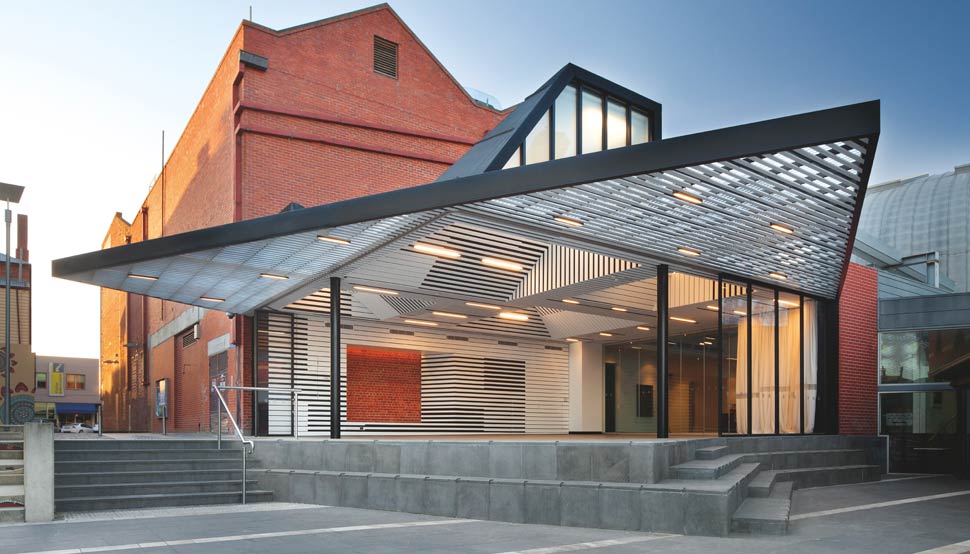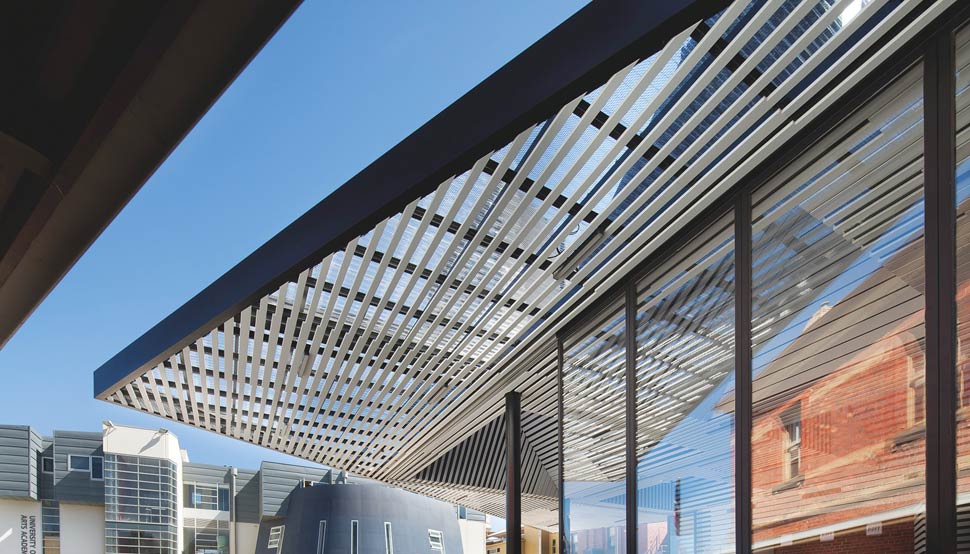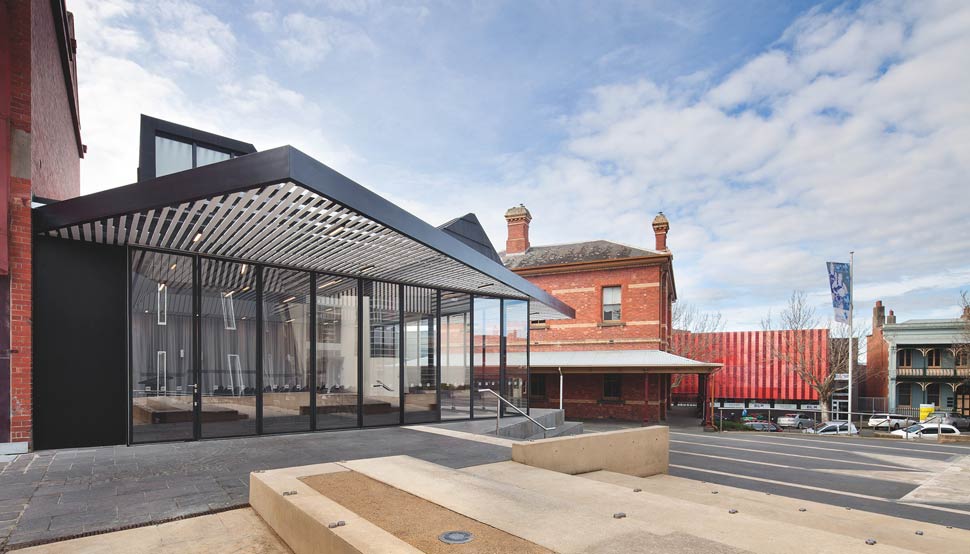Art Gallery of Ballarat Annexe
Layered with historical references, urban connections and a sense of community spirit, this small yet ambitious annexe exemplifies successful civic space.
Credentials:
Client: City of BallaratLocation: Ballarat, Victoria
Architect: Searle x Waldron
Project Team: Nick Searle, Suzannah Waldron
Builder: Nicholson Construction
Structural Engineer: TGM Group
Project timeframe: 2010–2011
Awards: Australian Institute of Architects Victoria 2012 COLORBOND® Award for Steel Architecture, Australian Institute of Architects Victoria 2012 Public Architecture, Alterations and Additions Award
Building Size: 131m2 footprint/187m2 covered area Total Project Cost $550,000
The Annexe exists as a discreet one-room pavilion, structurally independent to the existing heritage-listed gallery. It is a steel-structured space with a timber-lined interior enclosed by black, steel-framed moveable glazing panels that open out onto Alfred Deakin Plaza. The architects selected steel “for its lightweight versatility, rapid assembly and ability to be accurately tailored to the existing conditions.” The roof cleverly folds in on itself to create multiple facets of light within, and overhangs on the outside where it forms two large awnings that address both the plaza and adjacent historic Huyghue House. Resting on a plinth, it steps down to further activate the plaza space and adjacent buildings.
The client's brief called for a ‘permanent marquee’, a multi-purpose addition that would expand the gallery’s existing function spaces. The architects “expanded the brief during the initial design stage to incorporate three modes of operation as a public hall, verandah and bandstand – formally and programmatically recalling local typologies.”
One of the biggest challenges for the job was to provide a column-free space to enable the usage flexibility required for the space.
Searle x Waldron Architecture was asked by its structural engineer from TGM group if there could be a column in the corner; ‘no’ was the short answer.
The outcome of the whole project pivoted on this point. With a dual five-metre cantilever to the corner, the structure was designed to allow open space and flexible program shifts. “We conceived it to be a simple structure but this was complicated by the performance criteria,” says Waldron. “Fourteen moveable steel glazing panels weighing 2800 kilograms had to be held exactly 20 millimetres from the ground, with as little defection possible. Thanks to Jim, our structural engineer, there was no corner column,” she adds.
Internally, the ceiling and storage wall are lined in black and white struts that graphically echo the optical works of Bridget Riley, the Dazzle camouflage ships of World War I and a little dash of Harold Desbrow Annear. The boards are striated in three standard widths that shift from solid to open at the extreme awning edges. Searle and Waldron explain: “The painted timber linings recall 19th Century back-of-house spaces.” The striated patterning, along with the high ceiling and multiple skylights creates a lovely spaciousness for this relatively small area.
Searle and Waldron believe in “Applying the same design ambition to all scales and typologies” and their Annexe design is testimony to this. Layered with historical references, urban connections and a sense of community spirit, this small yet ambitious project is a great example of successfully resolved civic space.








